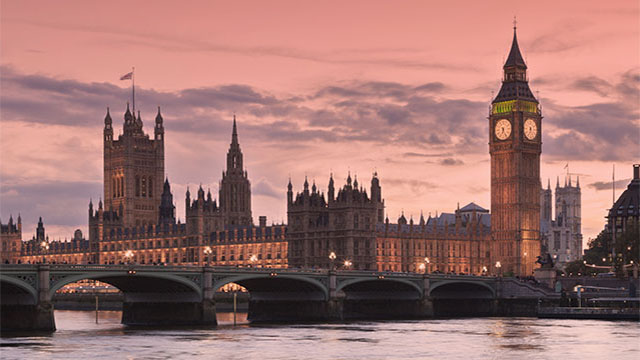New York’s Fifth Avenue, Newbury Street in Boston, the Champs Elysee in Paris, Moscow’s Novy Arbat Street and Grafton Street, Dublin, are just some of the prime streets catching the eye of a growing number of global retailers seeking worldwide recognition for their brands.
Despite high occupational costs and strong domestic competition, London attracts a significant number of these important players, which now have stores in Regent Street, Oxford Street, Carnaby Street, Covent Garden and the King’s Road. This has led to a colourful and vibrant shopping scene, and one which offers greater choice for landlords and shoppers.
A good example is preppy US phenomenon Abercrombie & Fitch, which took its first UK site in Burlington Gardens, and is now seeking stores for its younger, surf-inspired brand, Hollister. Another is Inditex, which has extended its successful Zara concept into home fashion.
With seven UK stores, Urban Outfitters is an outstanding example of success in its host country. It is now looking for sites for its home and clothing chain, Anthropologie.
Despite the weak dollar, London is the stepping stone to Europe for many American players. Examples are Whole Foods Market, Brooks Bros, and the imminent debut of GAP’s more aspirational concept, Banana Republic, in the former Dickins & Jones store on Regent Street, WI. In addition, US brand Playboy will open its European flagship on Oxford Street this year.
Yet despite the hype that surrounds international retailer openings, there is no guarantee of immediate success. One only needs to look at the experiences of Eddie Bauer, the Limited Brand’s Bath & Body Works, Sephora and the early days for Uniqlo, Mexx and Esprit.
Cue the much anticipated US success story that is Whole Foods Market, now open in the former Barkers store in Kensington fundamentally, can a store of this size be sustainable with “top-up” shopping alone?
Despite a chequered UK experience, the Japanese company, Fast Retailing, with its 11-strong Uniqlo chain, brings two dominating stores to Oxford Street. The 25,000 sq ft flagship near John Lewis will be followed by another 17,000 sq ft store to the east side of the street.
Hoss, Cos (H&M’s upmarket spin-off), Zadig & Voltaire, Comptoir des Cotonniers, Thomas Sabo and Calzedonia (Intimissimi and Tezenis) have also introduced themselves in flagship locations in London.
Ease of travel and the influence of the internet has broken down insular consumer attitudes to create a more sophisticated, demanding shopper. This is accelerating the globalisation of retailing, and developers are improving retail space in a bid to attract the international players.
Landlords of high-profile London hot spots, heritage and character buildings need to understand what the retailer wants in terms of ideal space and customer profile.
They may also need to offer flexibility in the standard lease structure, which would not automatically mean lower rents. For example, the retailer could gain some certainty over outgoings for the duration of a lease by agreeing RPI or fixed rental increases as an alternative to the standard five-year rent review.
Bluewater has excelled in attracting a host of international retailers, including Dutch jewellery brand Pilgrim, Italian footwear specialist Geox, American children’s clothes brand Little MissMatched, and Russia’s largest lingerie specialist, Vendetta. It has also delivered the first fully covered shopping centre site for Urban Outfitters, and flagship sites for Oakley and the Italian-owned brand Murphy & Nye.
These retailers are attracted by the high spending propensity of Bluewater’s 27m visitors each year, as well as by its flagship status and iconic design. Top-performing brands at Bluewater can expect to achieve sales figures of more than four times the national average.
When looking to attract luxury and boutique retailers, landlords should consider factors such as the environment, neighbours and lease structure. Boutique retailers do not normally fit into shopping centre environments, preferring natural habitats like Bond Street, Sloane Street, Westbourne Grove, the London villages and pockets of Covent Garden.
But if landlords have the vision to create special areas that meet retail demands, retailers will open a dialogue with them. Bluewater, for example, has a cluster of village retailers such as Sweaty Betty, White Company, Lombok, Joseph and Whistles.
There is also a bespoke location – home to embryonic boutiques such as Pugs & Kisses, Strawberry Bunny, Vom Fass and Dower & Hall – off the aspirational mall.
Developers are being encouraged to custom-design in order to entice certain retail groups. An example is the exclusive open-air 500,000 sq ft Bal Harbour scheme in South Florida, which can boast the highest sales densities per sq ft in America. Its form of ultra luxury has attracted more than 100 boutiques for brands such as Hermes, Gucci, Prada, Chanel, Saks and Neiman Marcus.
For these brands, beautiful boutiques and al fresco dining in a landscaped outdoor setting offer far greater appeal than the kind of air-conditioned mega mall of familiar high street names, which defines shopping centres in the UK.
Names like Banana Republic and GAP sit comfortably in this setting, alongside Bottega Veneta and Bulgari, Georgio Armani and Graff.
Of course, the climate in Miami is more appealing than that of London, but stylish open-air formats and streetscapes are being used more often in mixed-use developments here as developers seek to attract upmarket retailers and affluent shoppers. Developers also need to think about creating signature dining offers, spas, concierge services, valet parking and personal shopping facilities.
There is a clear trend for luxury retailers to take stand-alone units in order to increase brand exposure and, ultimately, sales. Stand-alone stores offer an opportunity to define a brand in a way that a department store with limited space and a controlled environment cannot.
Demand for luxury goods is stronger than ever and, with increasing private equity in upmarket brands, there is a drive towards opening new stores. For Westfield London, opening next year, Westfield worked with New York-based architect Michael Gabellini – best known for his work on designer boutiques for Jil Sander, Nicole Farhi, Ferragamo and Armani – to create a luxury environment for Louis Vuitton.
In the redevelopment of Eastgate and Harewood Quarters in Leeds (opening 2012), Hammerson and Town Centre Securities aim to develop a luxury, custom-designed village, and are engaging brands early in the planning process to ensure the design meets their exacting requirements.
Hammerson’s plan for Leeds – building on the success of the Victoria Quarter – is innovative in design terms and exciting for upscale brands. In addition, the aim for the Cabots Circus development in Bristol, and the Highcross Quarter scheme in Leicester, is to attract top names for defined areas.
There seems little doubt that foreign interest – attracted by the potential for strong retail performance and the UK’s importance as an international market – will continue to provide the UK with new retail formats.
And by creating bespoke environments, developers can open doors to leading brands, designers and independent boutiques, providing a welcome splash of colour to our retail landscape.










